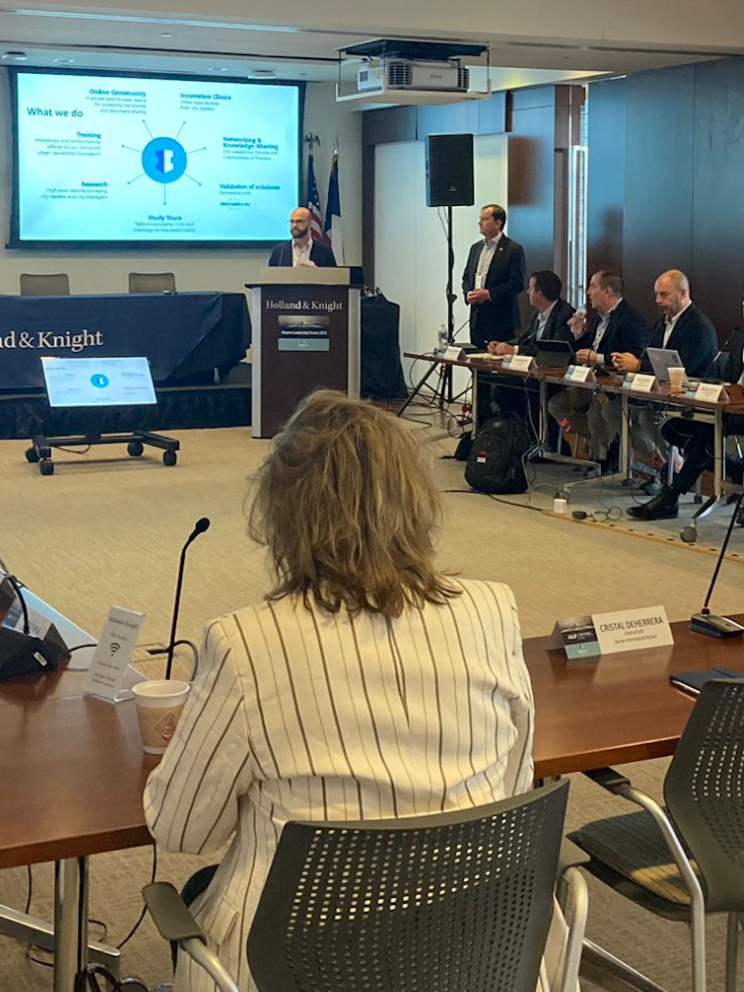
Photo: Andreas Schleicher
OECD report reveals growing links between education and cities
22 January 2016
by Jonathan Andrews
The OECD has released its Trends Shaping Education 2016 report that examines major trends affecting the future of education. The author, Andreas Schleicher*, writes for Cities Today about the increasing role that cities are playing in the future of education
In one way, cities are now the most relevant level of governance, small enough to react swiftly to challenges and large enough to hold economic and political power. And many cities are open and globally connected to the extent that cities in two very different countries, such as New York City and Shanghai, may have more in common with each other than with the rural communities in their own country.
A number of trends stand out: citizens are becoming more engaged in the running of their cities, facilitated by the potential of new technologies and social networks. Examples include Occupy Wall Street, which spread across more than 1,500 cities with the help of social media. Fix My Street, an application which allows residents to use an online map to report street problems and needed repairs, has spread in one form or another to over 16 OECD countries. Similar technologies exist for a wide variety of other services. Are we witnessing the ‘uberisation’ of our economies, a process where the consumer (and citizen) can bypass traditional service providers and have more control over what they want, and when they get it?
Another trend is the rise of smart transport. Since 1863, when London opened the first metro system, there has been a steady increase in numbers and forms of public transport. There is now an emphasis on services that reduce pollution and increase flexibility, such as electric car and bike sharing. Launched in Copenhagen in 1995, bike sharing has since spread to 676 cities worldwide, and there are now more bike-sharing systems than metro systems. Currently, China hosts the largest bike share programme in Hangzhou, Zhejiang, which supplies over 80,000 bikes. This illustrates the innovation potential of urban areas, but it also underlines the importance of reducing pollution to sustain liveable environments.
Cities are also amazing educational environments. Countless policy makers and researchers have flocked to observe the education systems of Hong Kong, Shanghai and Singapore, which are among the top performers in the PISA (Programme for International Student Assessment). Many visitors have been particularly impressed by the fact that these education systems succeed in embracing the social heterogeneity in their student populations that is intrinsic to large urban environments-something that many education systems struggle to achieve.
But large cities do not just pose social challenges to educators; they also offer important advantages for schools, such as a richer cultural environment, a more attractive workplace for teachers, more school choice, and better job prospects that can help to motivate students. Indeed, a closer look at the results from PISA reveals large cities are generally educational assets: student learning outcomes in most countries look far better when only students in urban areas are considered, although this is not the case in some countries, such as Belgium, Slovenia, the United Kingdom and the United States. And when comparing the performance of students in large cities, students in Portugal and Israel perform as well as those in Singapore, and students in Poland perform as well as those in Hong Kong.
But education in cities is not just about providing the skills needed for community engagement, and supporting creativity and innovation throughout the lifespan. It is not just about preparing more urban planners and engineers who can design liveable urban spaces and encourage smart transport in increasingly dense cities. And it is not just about research and innovation hubs that fuel modern cities. It is equally important about learning environments that can prepare students for a world in which most people will need to collaborate with people of diverse cultural origins, and appreciate different ideas, perspectives and values. A world in which people need to decide how to trust and collaborate across such differences. And a world in which their lives will be affected by issues that transcend national boundaries. It is about helping students to develop autonomy and identity that is cognizant of the reality of national and global pluralism, and to equip them to join others in life, work and citizenship. The lessons students are taught in school will carry forward into their communities, giving schools and universities a direct path to positively impact their immediate surroundings.
* Andreas Schleicher is the Director for the Directorate of Education and Skills at the OECD




